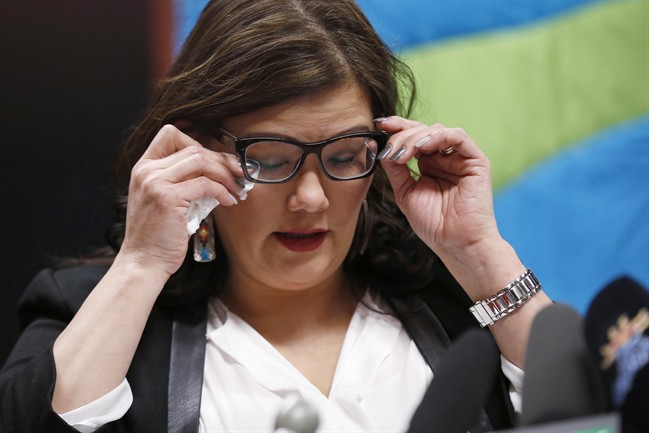Rates of violent crime against young women and girls are five to six times higher for those living in Manitoba’s north compared to those living in southern section of the province, according to new numbers from Statistics Canada.

A study looking at rates of violent crime in northern Canada in 2017 published this week, found across Canada’s north, 2,036 girls and women aged 24 and younger reported being the victims of violent crime. That translates to a rate of 3,643 victims per 100,000 people.
Northern Manitoba had the second highest rate of all regions with 9,025 victims reported per 100,000 person that year.
The numbers don’t surprise Manitoba Keewatinowi Okimakanak’s (MKO) Hilda Anderson-Pyrz, who has spent decades raising awareness about the issues facing Indigenous women in the north.
“We look at a lot of our Indigenous women and girls who are living in extreme poverty and living in third world conditions in First Nation communities in the north and they don’t have access to housing, economic opportunities, quality education, food security, access to quality health care,” she said to 680 CJOB.
“When you’re living like that, of course there’s going to be higher levels of violence because you’re so limited in what resources are available to you.”
The survey looked at of police-reported violent crime in Yukon, the Northwest Territories, Nunavut and the northern parts of B.C., Alberta, Saskatchewan, Manitoba, Ontario, Quebec and Newfoundland and Labrador.
Across the regions it found the rate of violent crime against women and girls in Canada’s North is three times as high as the rates in the rest of the country.
Of the crimes reported to police, roughly 63 per cent were physical assaults while 24 per cent were sexual offences.
Another 10 per cent were criminal harassment or related to other kinds of threats.
Women under the age of 24 also made up a larger proportion of homicide victims than their counterparts in the rest of the country.
Thirty-one per cent of homicide victims in the north were women and girls, while the percentage for the rest of the country was 24 per cent.
As with violent crime victims in the southern parts of the country, most victims in the north knew their assailant.
Anderson-Pyrz says there’s a lack of resources and services available for women experiencing violence in Manitoba’s north. She says more mental health supports and shelters for victims fleeing violence need to be made available.
“They have so many barriers,” she said.
“It’s very difficult to escape violence if you have nowhere to go, unfortunately, because there’s no other options, many go back to that same cycle of violence.”
She would like to see programming teaching about healthy relationships started in school, when children – both boys and girls – are young, she said.
“To learn about boundaries, healthy relationships with sex, and also to really strengthen them in their identity and culture and language so they know who they are because we’ve had different institutions really impact Indigenous communities and families,” she explained.
“When we look at the Indian Residential Schools, child welfare, and the justice system – these have all been contributing factors as well to the high levels of violence.”
In June the federal government released its final report into Murdered and Missing Indigenous Women and Girls, calling the violence against First Nations, Metis and Inuit women and girls a form of “genocide” and a crisis “centuries in the making.”
The report contains more than 200 recommendations to multiple levels of government.
– With files from Amanda Connolly
RELATED VIDEO: Moving forward after the MMIWG report





Comments